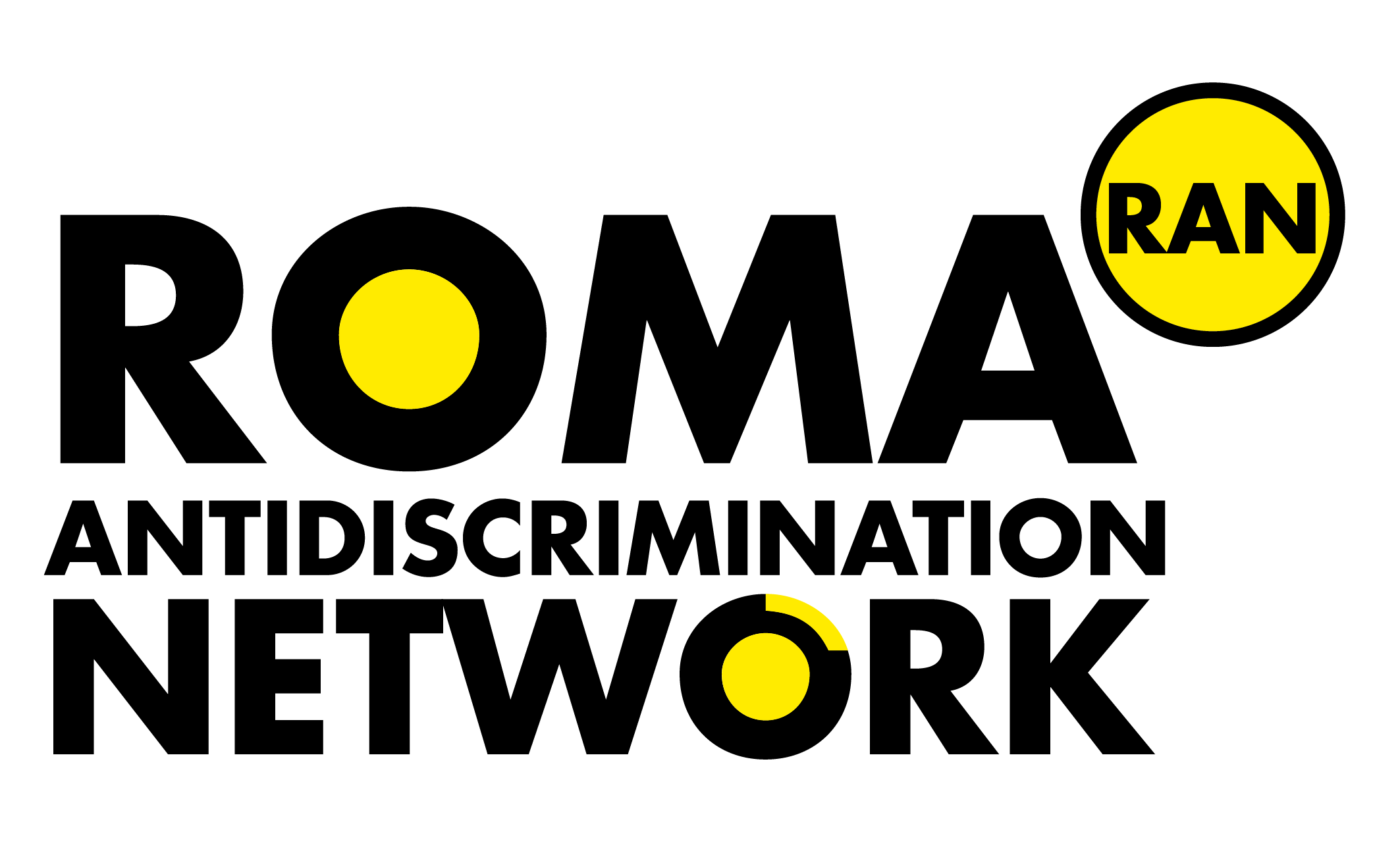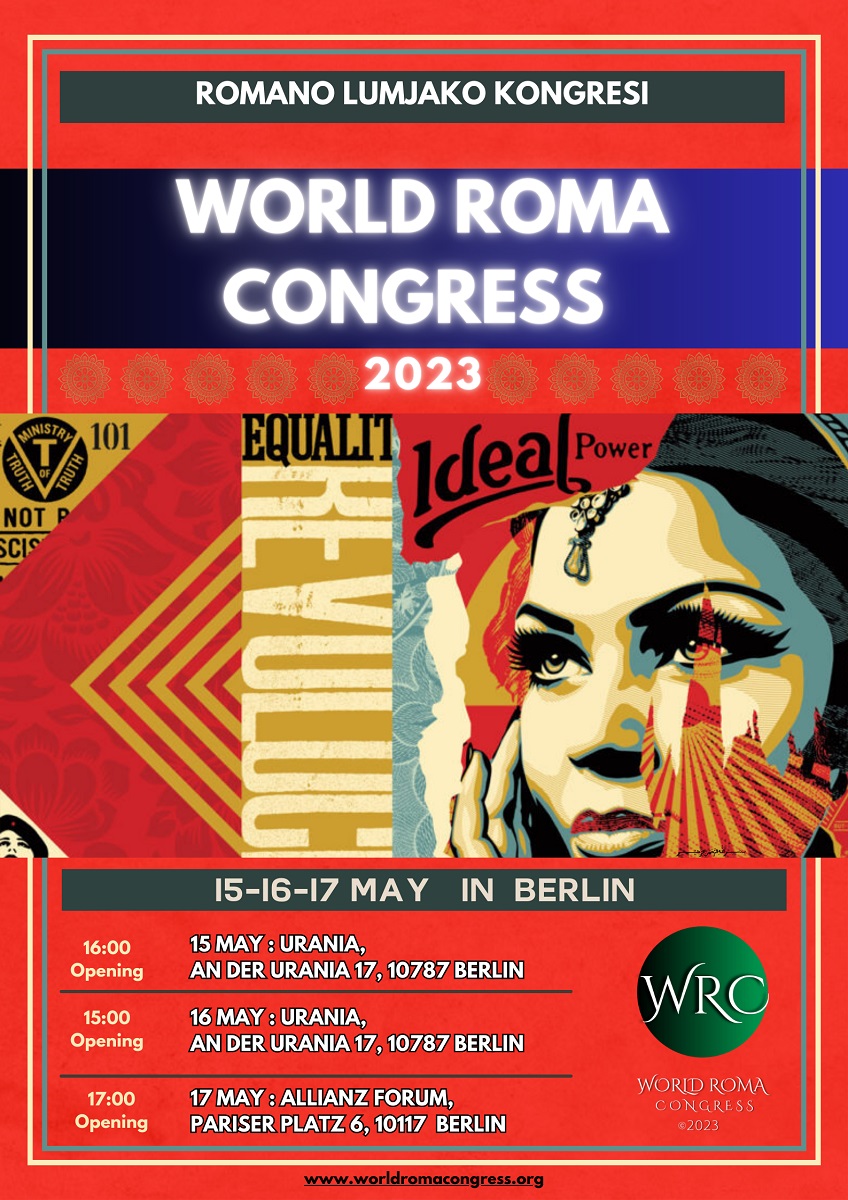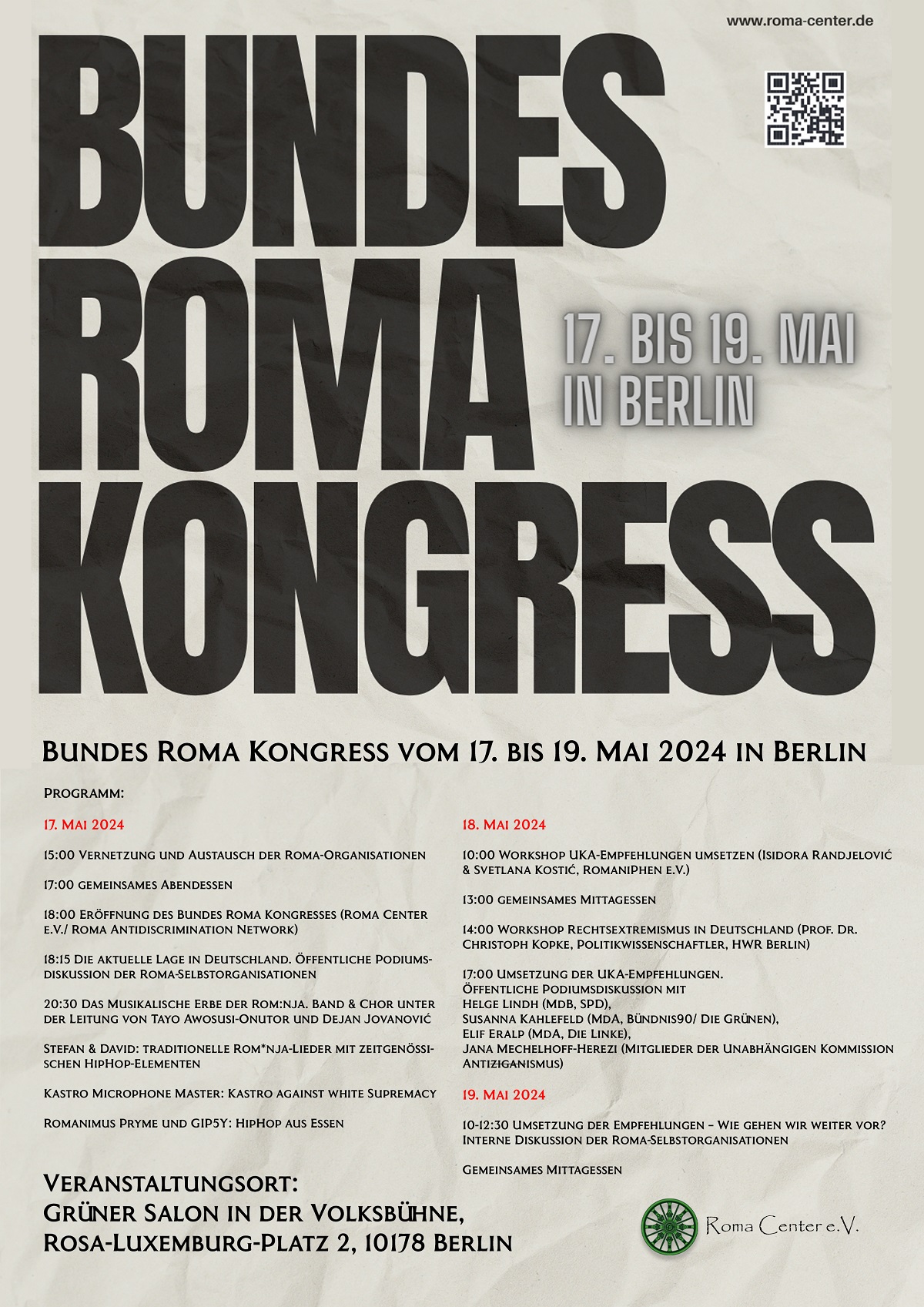EUROPEAN ROMA VISION-EXPERIENCES FROM ROMANIA AND GERMANY
EUROPEAN ROMA VISION
EXPERIENCES FROM ROMANIA AND GERMANY
2012-2014
DIFFERENT, BUT ROMA
STARTING POINTS
MEETING IN BUCHAREST
“European Roma Vision” pro-ject team started from the idea that, even diverse, the Roma youngsters communities from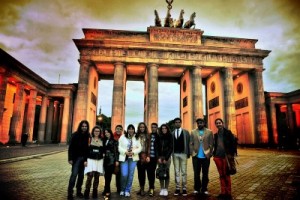 Germany and Romania share some common values and goals.
Germany and Romania share some common values and goals.
The challenge was to discover these common ground, by
finding ways to empower youngsters from both coun-tries.
The objective was to create parallel networks in the Ro-mania and Germany, each consisting in groups from 4 cities.
For Romania, the 4 groups was decided to be formed in
Bucharest, as the Capital of the country with many Roma youngsters coming from all over the country to study or to work, Barlad, a small town from the region of Moldova, facing poverty and “ghettos”, Mangalia, a town were Roma people often preffer to iden-tify themselves as Turks in order to prevent discrimina-tion as “gypsies” and, finally, Targoviste, a city not far from Bucharest, were many Roma youngsters are actively in-volved in civic projects for theier community. So, 4 dif-ferent groups, coming togeth-er.
For Germany, we had formed groups in Goettingen, Hanno-ver, Bremen, Berlin, Essen, Jena and Bochum. We added
Berlin and the North Coast of Germany.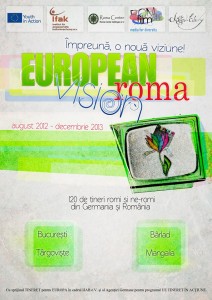
Most of the Roma youngsters in Germany were not inte-grated in the legal system because their identity status was “refugee”, so they had no chance to get formal edu-cation, or a job. In some re-gions, as Northern Westfalia and Berlin the members of the group had a legal status, but had the feeling that they would be discriminated be-cause they are Roma.
The differences were pointed out, between national groups, and, further more, between Romanian and German group.
LOCAL GROUPS
ROMANIA – ROMA IDENTITY, A HISTORY OF HIDDEN KNOWLEDGE IN THE COMMUNITY
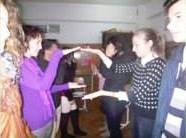 When we started work-ing together and discuss-ing about Youth in Ac-tion goals, we discov-ered the need of dia-logue between Roma and non-Roma youngsters. The identity of the 2 million people from Romania, that NGO’s consider to form the Roma population, became obviously confus-ing at the last national Census, two years ago, when only 614.000 citi-zens declared themselves Roma
When we started work-ing together and discuss-ing about Youth in Ac-tion goals, we discov-ered the need of dia-logue between Roma and non-Roma youngsters. The identity of the 2 million people from Romania, that NGO’s consider to form the Roma population, became obviously confus-ing at the last national Census, two years ago, when only 614.000 citi-zens declared themselves Roma
Therefore, our workshops, as the ones in Mangalia, focused on examples of self-confidence building in Roma community, using personal examples . It became clear, as far as the youngsters confided to us, that they don’t know many things about the key-points of Roma identity. In Mangalia, discus-sion about Roma Holocaust, through a historical approach, brought up tears for some of the participants. The presenta-tion of the documentary “Sostar na rovas”, by Nicu Furtuna, which presented Ro-manian Roma Holocaust Survi-vors testimonies and historical facts, had a strong impact on
all the youngsters, who said to know nothing on the subject from the history lessons teached to them in school.
An other region, Moldova, an other town, 430 km distance from Mangalia, seemed to have the same confusion. The intercultural seminar with presentation of both Romanian and Roma traditions and cus-tomes showed there are many common points that non-Roma often ignore.
GERMANY- ROMA HISTORY, UNKNOWN IN THE CONSCIENCE OF GERMANS
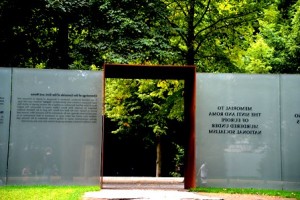 In Germany, most of the Roma history is unknown for the German popula-tion and the main task of the project for Ger-many was to discover this history. For this aim the idea of Roma unity was
In Germany, most of the Roma history is unknown for the German popula-tion and the main task of the project for Ger-many was to discover this history. For this aim the idea of Roma unity was
very important, to bring Roma younsters together, as one voice, to make them active. We succeeded to involve them in organizing a big street ac-tion in Rostock, in December 2012.Afterwards, from January untill April, we started to con-nect the people and to organ-ize ourselves in order to prepare the 8th April events on the occasion of Roma International Day. We invided many non-roma member of different or-ganizations, so in the end we had people from 30 cities from all over Germany demonstrat-ing in the streets of their home towns, with a clear message of unity: “Together we are strong” and “Alle Bleiben” (“All of us want to stay here in Germa-ny”).
NATIONAL ACTIONS
GERMANY—NATIONAL WIDE ACTIONS TO EMPOWER ROMA YOUNGSTERS
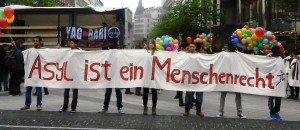 The first action on wich participants from the four regions came to-gether was the Global Action Day in December 2012, under the motto “ We mi-grate to live. No more deaths, no more missing people”. The Action
The first action on wich participants from the four regions came to-gether was the Global Action Day in December 2012, under the motto “ We mi-grate to live. No more deaths, no more missing people”. The Action
Day inspired some of the youngsters to strengthen the networking activities, there-fore in February 2013 they participated at a national meeting in Hannover. On this occasion, they prepared the activities for the next Interna
Ministries Conference in Germany, programmed May the same year. In Hannover, a couple of young Roma women established their own organization, which is called Romnja
The next step for the Internal Ministries Conference was the national workshop to develop a campaign. The aim of this workshop was to learn meth-
ods and practical tools to cre-ate a campaign strategy, to implement it and to organize people to take part in a demonstration.
In June we participated to the Antidiscrimination Network meeting in Hannover, to exchange our positions about Roma discrimination and to establish a platform to work together.
ROMANIA- ONCE SLAVES, ROMA ARE NOWDAYS EUROPEAN CITIZENS
The first time that participants from “European Roma Pro-ject”, coming from different cities, met eachother was to celebrate the Abolition of Roma Slavery Day in Roma-nia. The conference held on this occasion took place in Bucharest, at the House of the Parliament, Human Rigts Chamber. The “ERV” team received the invitation to the event from the main organiz-ers, the Human Rights Com-mision ( Chamber of Depu-ties) , National Agency for Roma ( Romanian Guvern-ment) and National Centre for Roma Culture. The speeches held by politicians, such as Nicolae Paun- Roma M.P. in Romanian Parliament; Mada-lin Voicu- MP for Socialist Par-ty, taking pride in his Roma origins, Nicolae Idu- head of the European Commission Rep-resentance in Romania empha-sized the stages that the de-velopment of Roma menthality passed through, since 1856 when slavery was abolished in Romania.
Following the work done in local groups, in order to iden-tify the
young Roma face in Romania, we organized national meet-ing in may 2013. The idea was to establish some key-points of a National Action Plan on Non-Discrimination of Roma. The idea broght up by now was that the broad public must get to know Roma row-models, youngsters who have succeded to overcome the obstacles in their lives, such as poverty and discrimination.
During the next month the ac-tivities in the project focused on organizing the National Conference, in mid July 2013. Therefore, a series of efforts were given to bringing togeth-er the data concluded before, during the youth local meet-ings and national seminars. This requested the involvement of experts in participatory democracy and advocacy, contacts being established with an important Romanian NGO- Active Watch – “ Media Monitoring Agency”. It was essential for our work to have the input of Irina Zam-firescu, project coordinator for Active Watch and civic activ-ist.
Into the same framework, the premises for dialogue with poli-ticians, already set during National Seminars early this year, were taken further. National governmental structures were approached and invited to hear the voice of Roma youth in Romania, by collaborating on their proposals.
This required enhancing the existing youth organisations net-work potential, and setting a clear agenda for handing it over to the politicians.Invitation for the National Conference were sent to several state authorities, among them: Ministry of Education, Ministry of Youth and Sports, The Interethnic Rela-tions Department, National Agency for Roma(Government structure), National Council for Fighting against Discrimination ( autonomous statal authority, under parliamentary con-trol).The outcomes of this efforts were that some of the high level representatives confirmed their presence to the National Conference, while two institutions agreed to a signed partner-ship in order to support “European Roma Vision” project and the youngsters participating to it. This partnerships were signed with the National Agency for Roma(Governmental structure) and the National Council for Fighting against Dis-crimination (autonomous statal authority, under parliamentary control).
The objectives we set for the National Conference went on three desired types of results, concerning: the attitudes, the skills and the knowledge of-fered to the 60 young Roma and non-roma participants,
coming from local groups set in 4 different cities: Bucuresti, Barlad, Targoviste and Man-galia.
The approach was designed focusing on: 1.Attitudes: – Roma and non-roma young-sters had the opportunity to connect, to communicate, work and spend some time togeth-er; The youngsters became more confident in their own forces 2.Skills: – youngsters were able to self-organize and work together as a team ; to identify the problems and the solutions to the communi-ty`s problems. 3.Knowledge: youngsters got to know the issue of their community or
other communities; the role of the local authorities and the means of intervention
The activities on the agenda were designed to ensure: 1.OVERVIEW of two main concepts: Active Citizenship and Participatory Democracy 2.TEAM BUILDING 3. FORUM THEATRE 4. CASE STUDIES – Roma communities in Romania, identifying the problems, find-ing the solutions Working Group Facilitation Issues Presentations Large Group Presentations Problems Identi-fied and finalizing the Nation-al Action Plan 5.DISCUSSION WITH GUESTS , invited au-thories representatives.
cused on exchanging the ex-periences the both teams in “ERV” project had in their countries.
A different approach for each group was emphasized. As far as Romanian group concerns, the idea of Active Citizenship and Participative Democracy are still to become clearer. The youngsters from the local groups, both Roma and non-Roma, feel that a dialogue with authorities is hard to be obtained, especially when one is young Roma, but for the others too. Some of the youngsters expressed their belief that institutions such as Cityhalls or Parliament are closed institutions, who do not
The International Meeting, the one organized in Berlin, in September and the one in Bucharest, in December, fo-
encourage the involvement of ordinary citizens. Even if proved different by the train-ings in the project and even more by the National Confer-ence, the sense of real power is yet a goal to be reached in the future by the youngsters.
NATIONAL CONFERENCE, SINAIA, 13-14 JULY 2013
INTERNATIONAL EXCHANGES
DIFFERENT COUNTRIES, DIFFERENT APPROACHES
Follow-up…
One year and a half we tried to define an “European Roma Vision” which involves Roma young-sters from Romania and Germany, but also non-Roma. One strong conclusion that came out of our meetings is that, for one hand, Roma are living their home countries, such as Romania, in order to get a better live somewhere else, and, for the other hand, once they get to Germany, France or other West-European state they are “encouraged” to return home.
This problems affect Roma all over the Europe.
In Germany, many of the former refugees from ex-Yugoslavia are urged to live the country that they consider their home. Roma youngsters, in searching for an “European Roma Vision”, say “Stop deportations!” .
 |
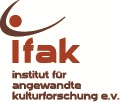 |
 |
|
|
